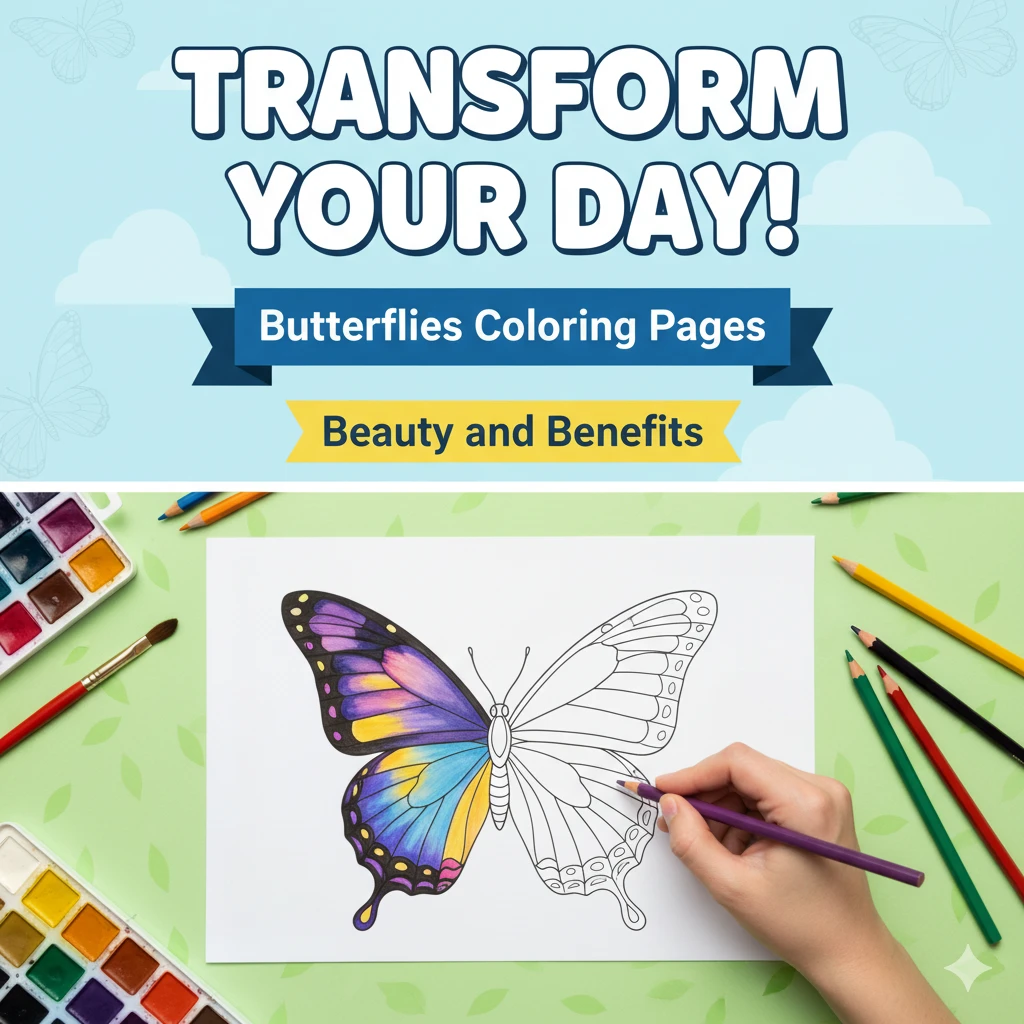
The Artistic Allure: Why Butterflies are Perfect to Color
The enduring popularity of butterflies coloring pages stems from their inherent design. Every species, from the common Cabbage White to the majestic Blue Morpho, presents a fascinating challenge and opportunity for the colorist. The key elements that make them so appealing include:
- Symmetry: Butterflies are the epitome of symmetry. Coloring the repeating patterns and ensuring mirror images on both wings is a wonderful exercise in spatial reasoning and precision.
- Intricate Detail: The tiny veins, eye spots, and scale patterns on the wings allow for advanced coloring techniques, such as shading and blending, appealing to colorists of all skill levels.
- Vibrant Colors: Nature has already provided an endless palette. Users can choose to replicate the exact, brilliant hues of a specific species or invent entirely new, fantastical color combinations without constraint.
Benefits Beyond Beauty: Skill Development Through Coloring
While relaxing, engaging with butterflies coloring pages is also a productive developmental activity. It aids in numerous cognitive and motor skills, particularly for younger learners:
- Fine Motor Coordination: Maneuvering a crayon or pencil to stay within the fine lines of wing patterns significantly improves the dexterity and control needed for future handwriting.
- Focus and Mindfulness: The repetitive, focused action of coloring a complex pattern acts as a calming exercise. It draws attention away from distractions, helping to reduce anxiety and increase concentration span a powerful form of low-stakes mindfulness.
- Color Planning: Deciding which colors will best highlight the butterfly’s shape and patterns requires planning and foresight, enhancing creative decision-making.
A Colorful Lesson in Metamorphosis and Nature
One of the great advantages of using butterflies coloring pages in a learning environment is the seamless way they integrate science education. Coloring can be the gateway to understanding the fascinating life cycle of these insects. Pages can depict all stages: the egg, the caterpillar (larva), the chrysalis (pupa), and finally, the adult butterfly. This visual learning aid reinforces the concept of metamorphosis in a fun and engaging way.
Furthermore, these pages can be used to introduce children to different butterfly species and their habitats, fostering an early appreciation for biodiversity and the importance of conservation. By coloring a realistic Monarch, for instance, learners can discuss its migration patterns or the plants it feeds on, making the learning process interactive and memorable.
Finding the Right Butterflies Coloring Pages
The vast world of printables means you can easily find a style suited to your purpose. When searching online, look for keywords that specify the complexity:
- Simple Butterfly Outlines: Ideal for toddlers and preschoolers.
- Butterfly Mandalas: Complex, repetitive patterns often used by teens and adults for stress relief.
- Realistic Butterfly Drawings: Best for educational use or older artists practicing detail and shading.
- Caterpillar and Chrysalis Pages: Great for teaching the full life cycle.


Comments